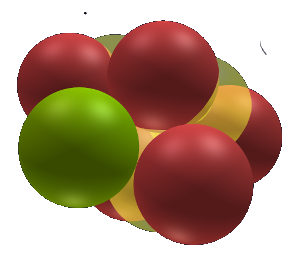Sulfur 32
Atom -
11 months 3 weeks ago
Impossible!
This is a depiction of Sulfur that would be (more or less) the result of two Oxygen's fusing together creating the "expected" shape of what would be Sulfur that would have similar properties to Oxygen.
However this shape seems to be inherently unstable and would decay to the normal Sulfur element whereby the 5 ending would not be created, but these 5 protons would migrate during the formation of this element to the here shown 4 ending position.
This turns the initial ending that loses the protons into a Carbon nuclet and the neutral ending receiving the extra protons into a Boron nuclet.
See Sulfur 32
| Element | |
| Valence | *6, 5, 4, 3, 2, 1, 0, -1, *-2 |
| Stability |
|
| Isotope | |
| Abundance |
94.99 %
|
| Half Life |
Stable
|
| Decay | |
| Protons |
32
|
| Inner Electrons |
16
|
| Outer Electrons |
16
|
| Nuclear Spin | |
| Mass Actual |
31.9721 AMU
|
| Mass H Norm |
31.7238 AMU
|
| Mass Calc |
32.2504 AMU
|
| BE Nucleon |
8493.13 KeV
|
| BE Actual |
271.78 MeV
|
| SAM Lines | |
| BE SAM Lines |
0.00 MeV
|
| BE Difference |
0.00%
|
| AN-ISOTOPE |
16: 32
|
| Nid | 464 |
Atomic structure
N0:
state: final
protons:
P0:
P1:
P2:
P3:
P4:
P5:
P6:
P7:
P8:
P9:
P10:
P11:
P12:
P13:
P14:
P15:
neutrons: [U00]
nuclets:
N01:
state: initial
attachAngle: 3
protons:
P0:
P1:
P2:
P3:
P4:
P5:
P6:
P7:
P8:
P9:
P11:
P16:
P17:
P18:
P19:
state: final
protons:
P0:
P1:
P2:
P3:
P4:
P5:
P6:
P7:
P8:
P9:
P10:
P11:
P12:
P13:
P14:
P15:
neutrons: [U00]
nuclets:
N01:
state: initial
attachAngle: 3
protons:
P0:
P1:
P2:
P3:
P4:
P5:
P6:
P7:
P8:
P9:
P11:
P16:
P17:
P18:
P19:
